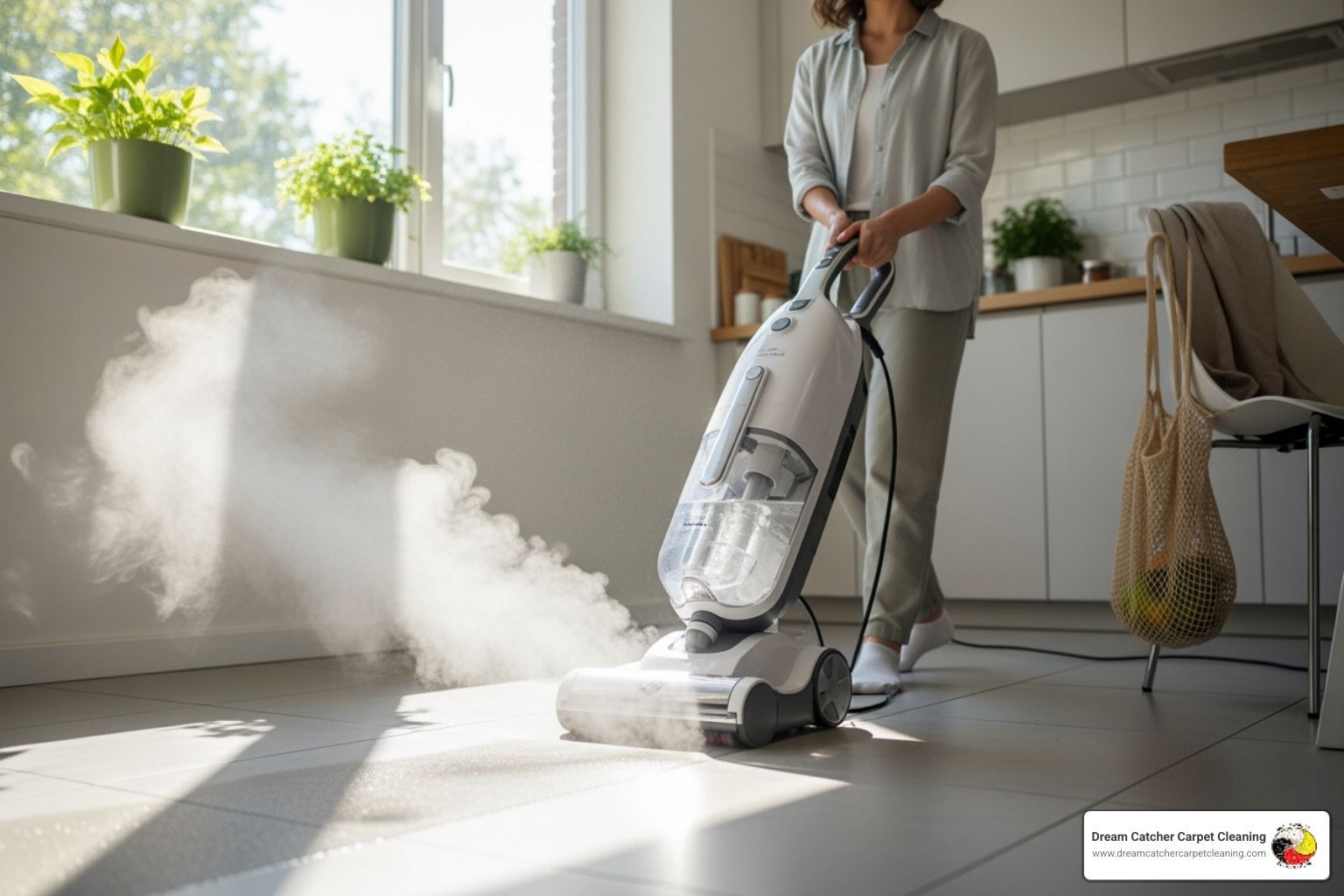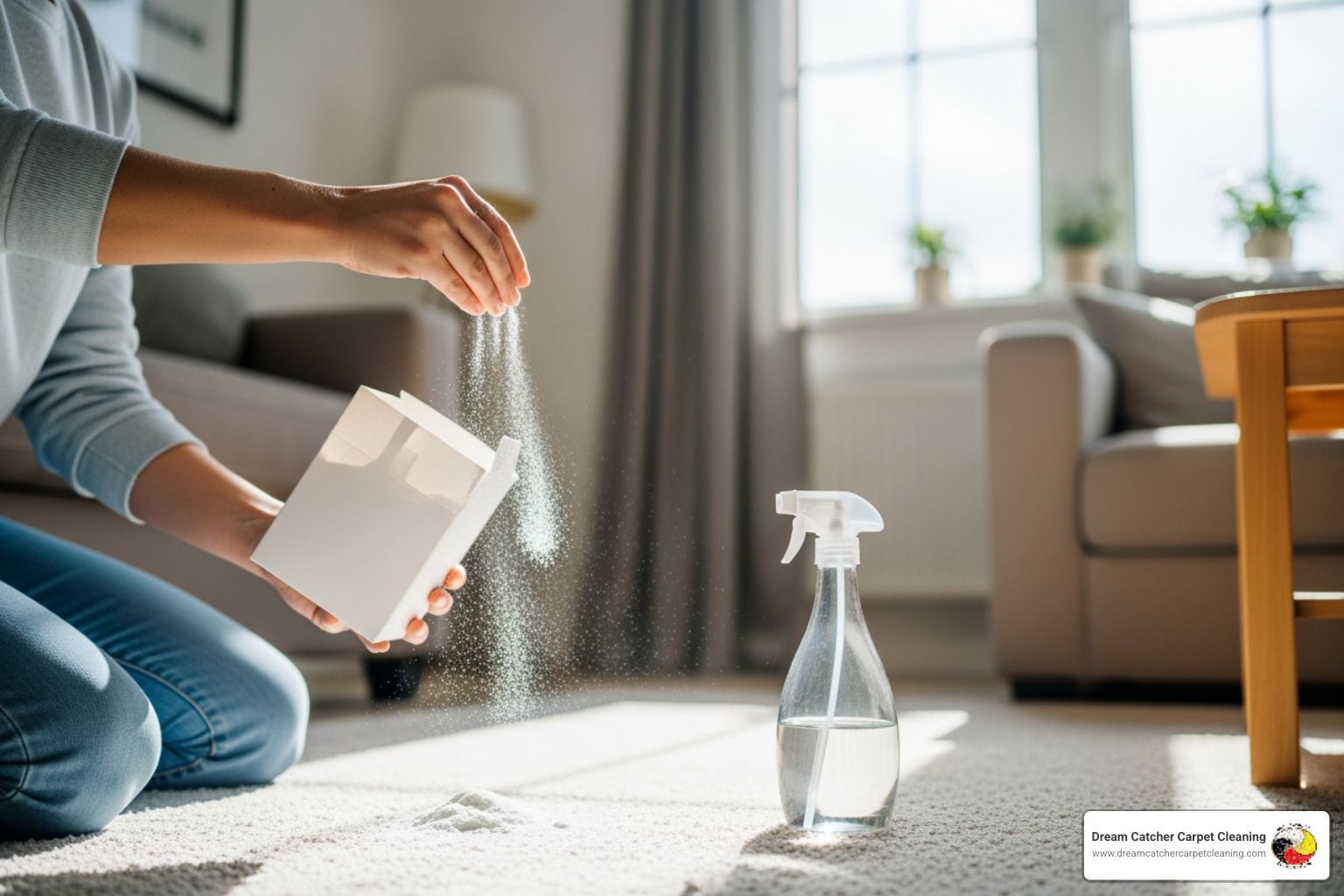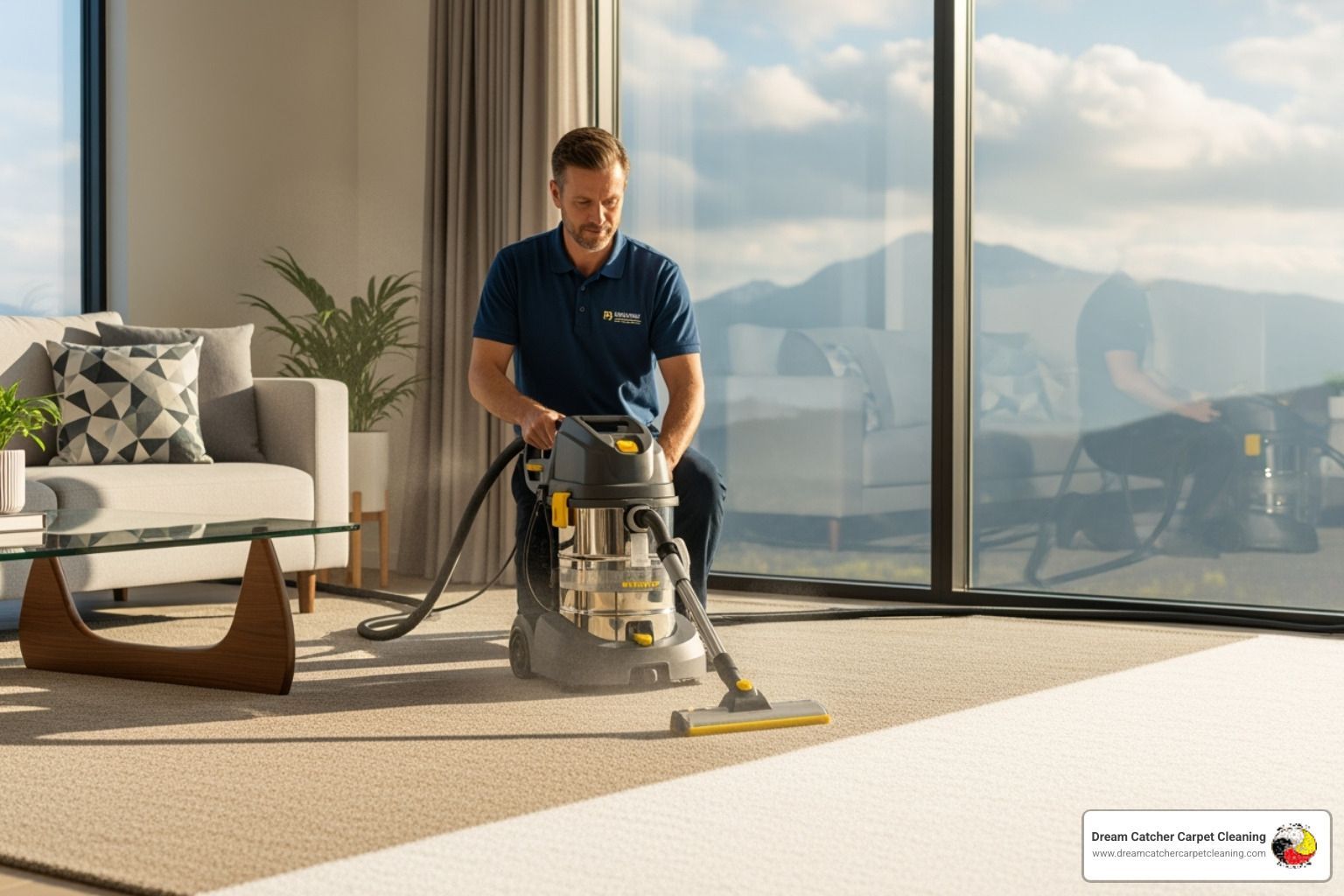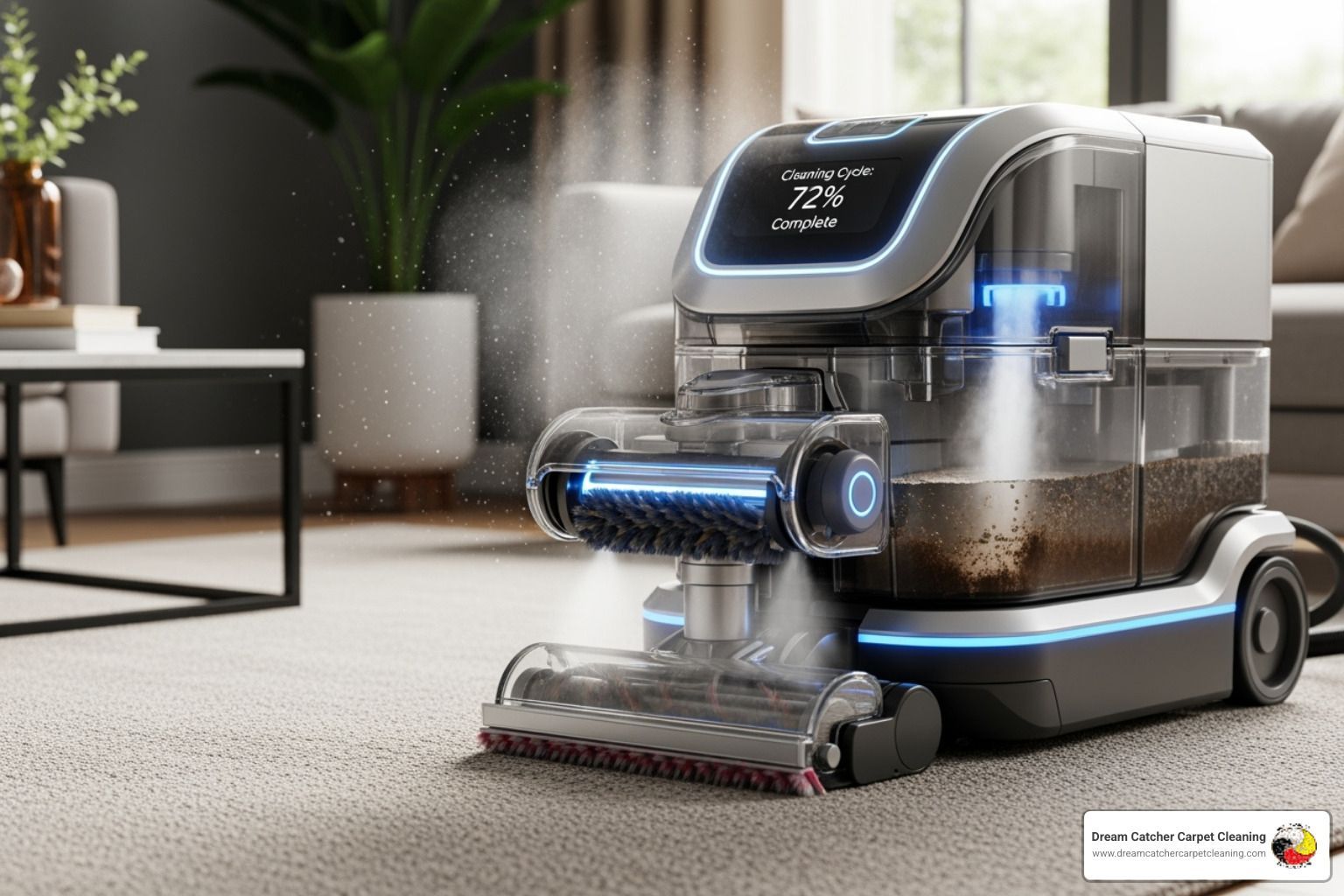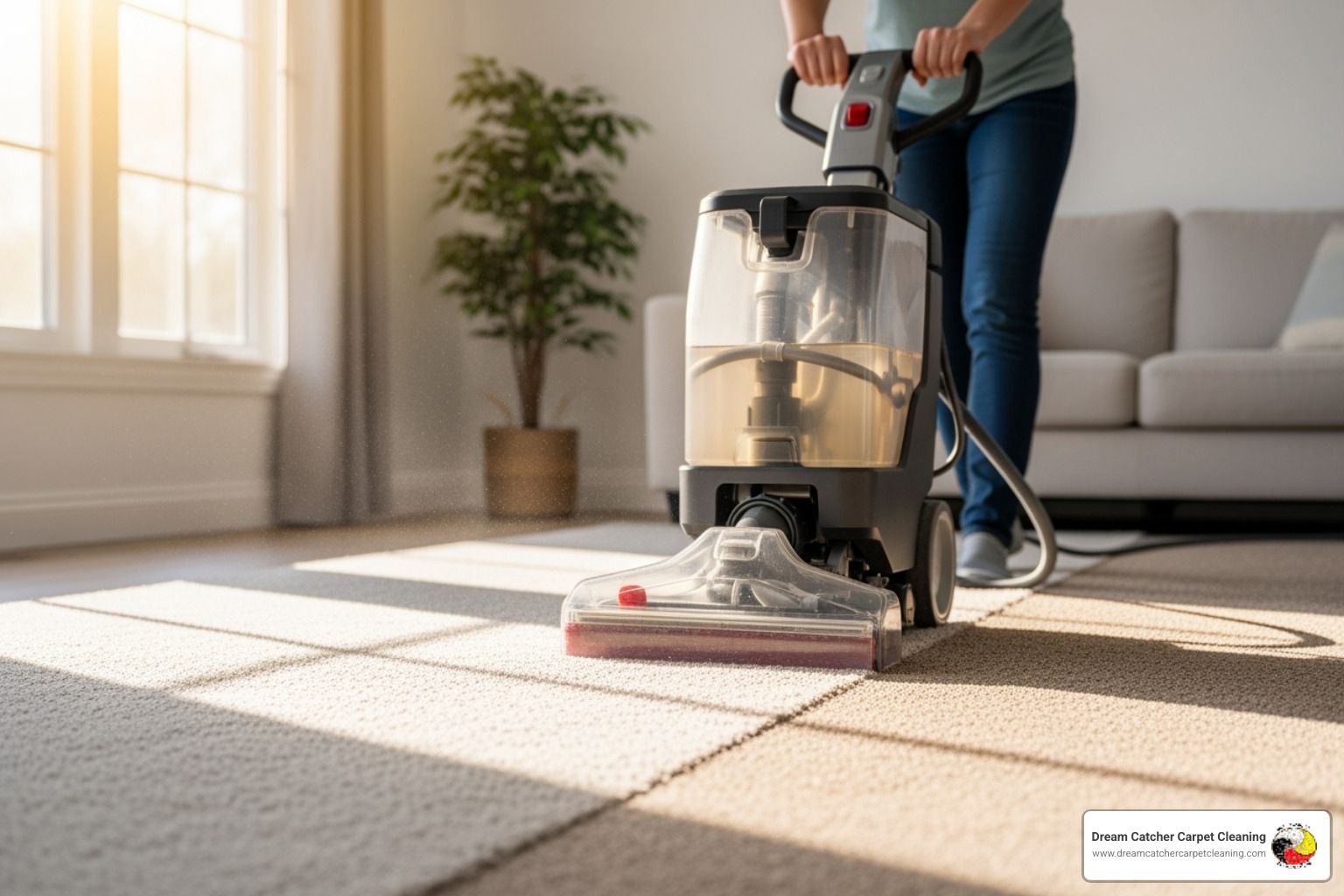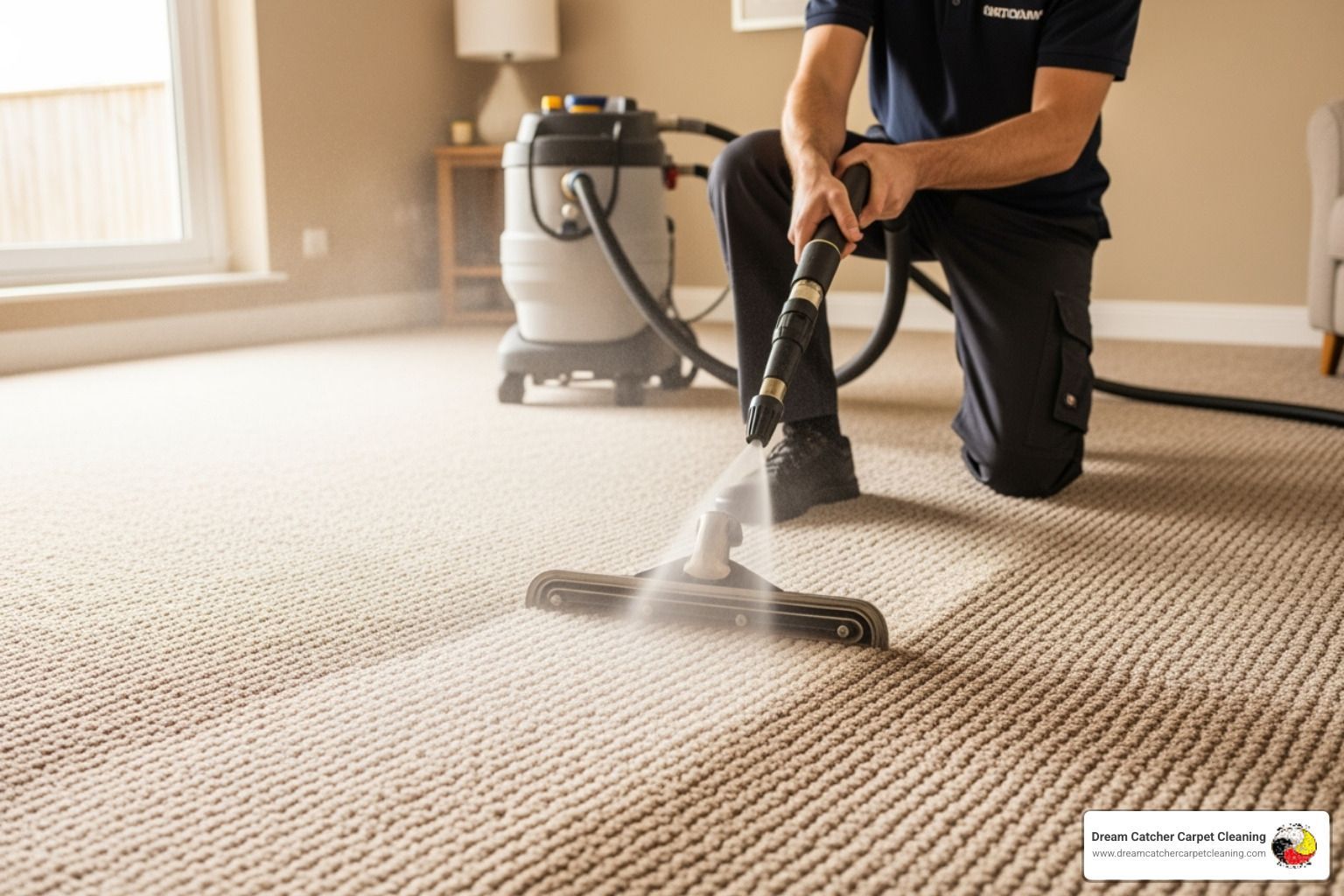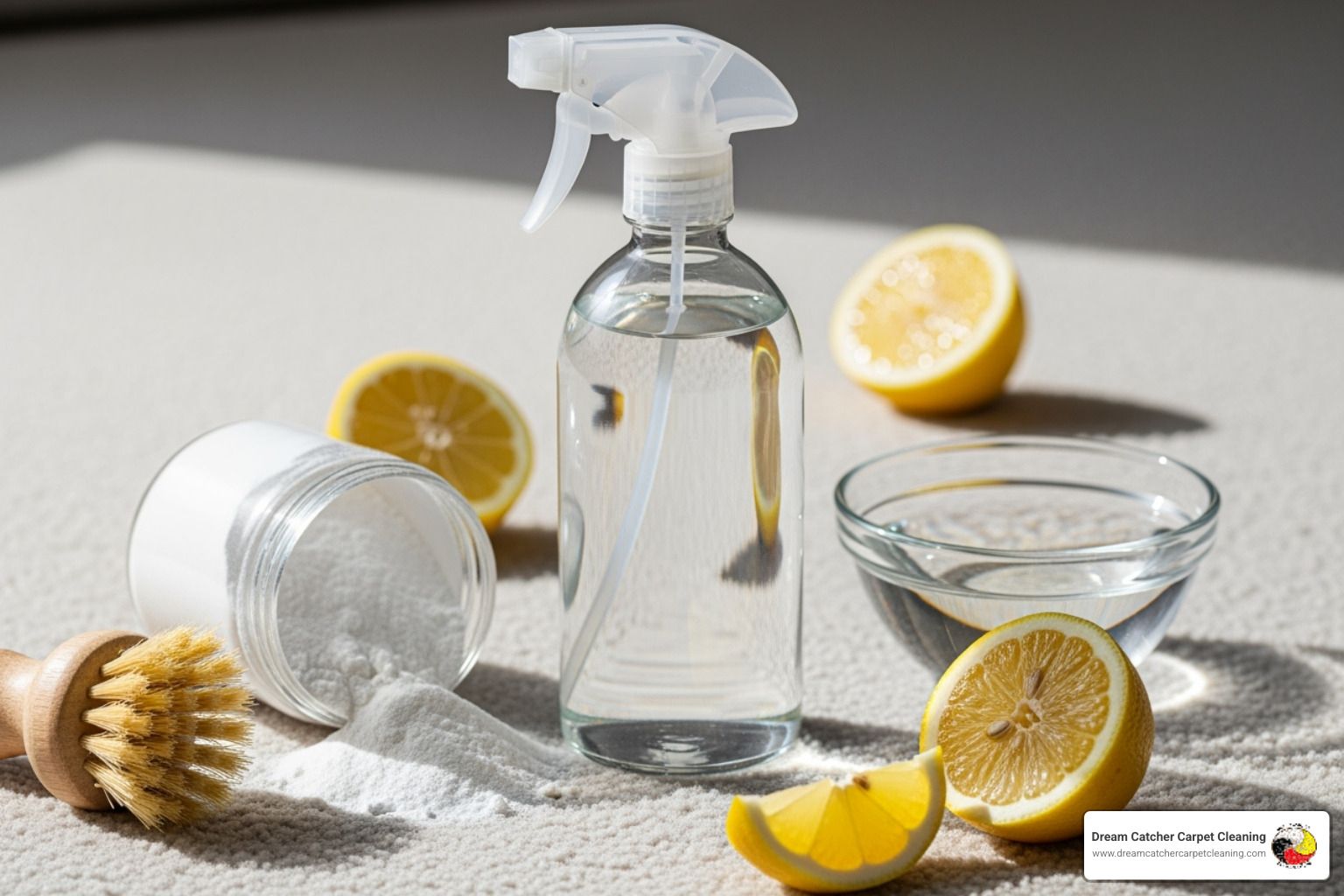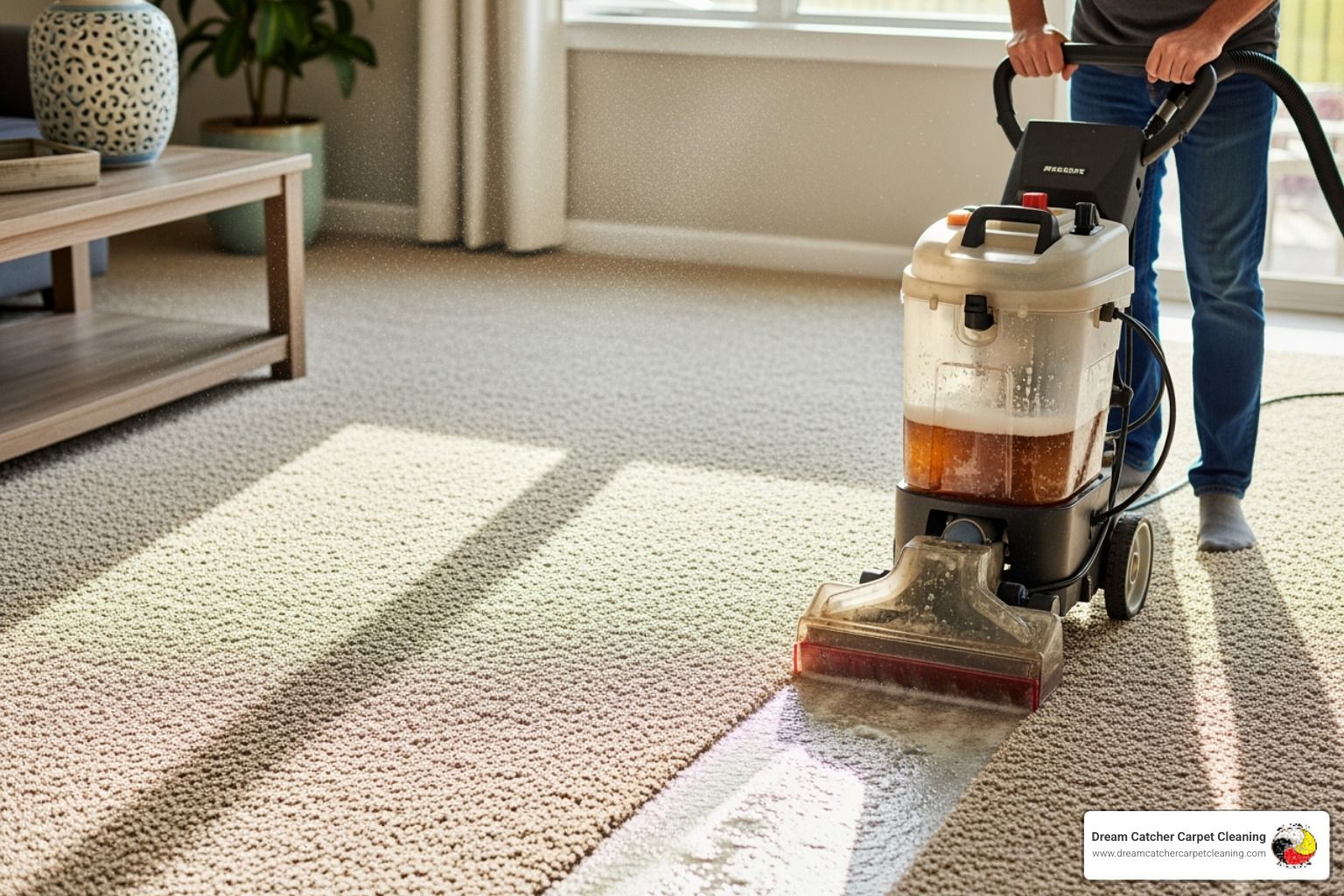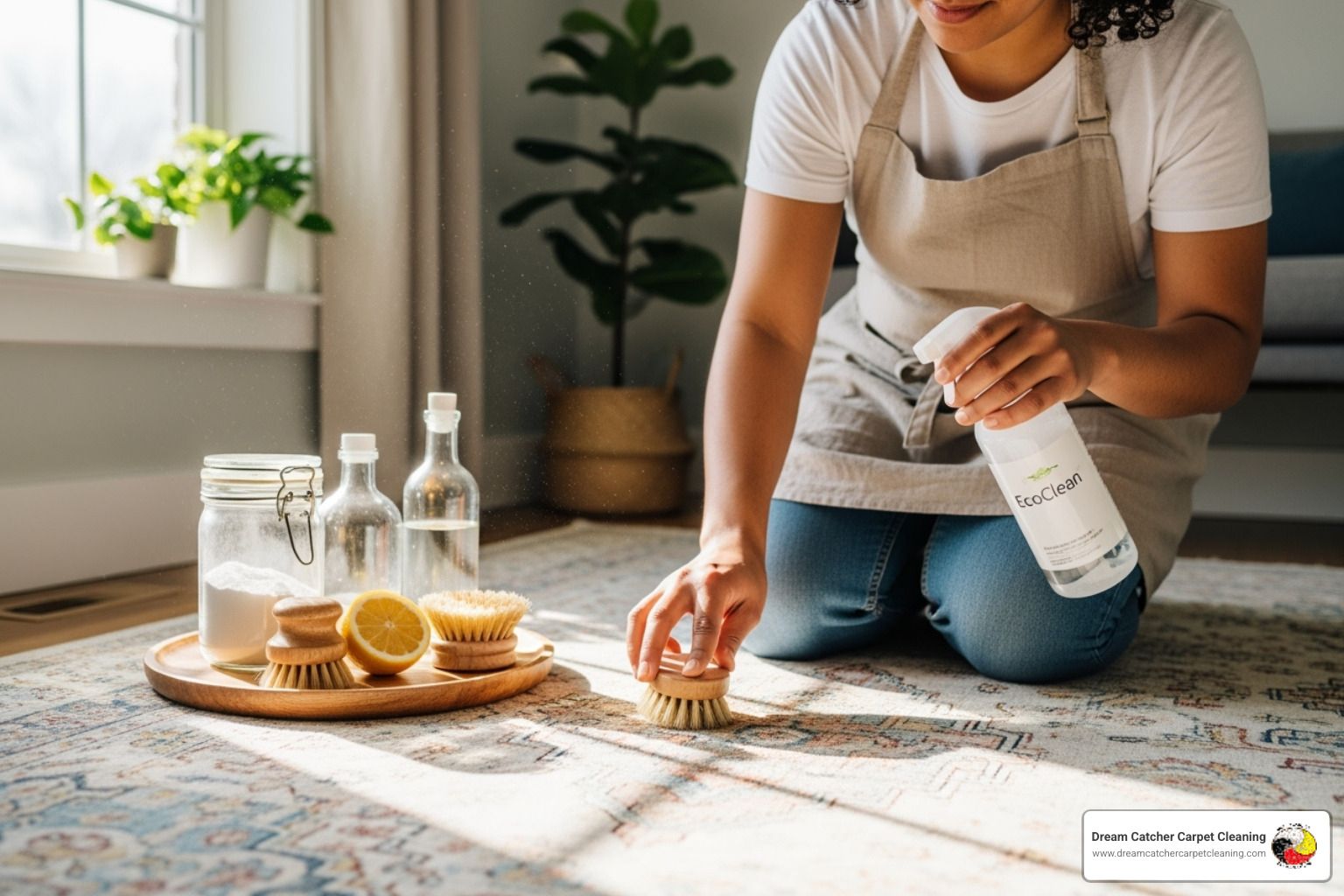Why Deep Cleaning Your Mattress Matters
To deep clean bed mattress, follow these simple steps:
- Strip and wash all bedding in hot water
- Vacuum the entire mattress surface with an upholstery attachment
- Spot-treat stains with appropriate cleaners (enzyme cleaner for biological stains)
- Sprinkle baking soda across the surface and let sit for 8-24 hours
- Vacuum thoroughly to remove all baking soda
- Allow to air dry completely before remaking the bed
We spend approximately one-third of our lives sleeping, yet many of us overlook the importance of keeping our mattresses clean. Your mattress silently collects dead skin cells, sweat, oils, and dust mites night after night. In fact, an average used mattress can harbor anywhere from 100,000 to 10 million dust mites inside! These microscopic creatures and their waste are common allergens that can trigger asthma symptoms and allergic reactions in the 76 million Americans who suffer from these conditions.
Deep clean bed mattress maintenance isn't just about removing visible stains – it's about creating a healthier sleep environment. Every night, you lose dead skin, hair, and around a pint of fluid while you sleep, all of which accumulates in your mattress over time. Regular deep cleaning helps extend your mattress lifespan beyond the average 7-10 years, while also eliminating allergens, bacteria, and unpleasant odors.
Whether you're dealing with spills, pet accidents, or just routine maintenance, knowing how to properly clean your mattress is essential for both hygiene and comfort. With the right tools and techniques, you can transform your sleep surface from a hidden collection of allergens into a fresh, clean haven for restful sleep.
I'm Clarence Smith, owner of Dream Catcher Carpet Cleaning with over 22 years of experience providing professional deep clean bed mattress services using environmentally safe cleaning solutions that effectively remove allergens, stains and odors. My team uses specialized equipment that extracts moisture efficiently, ensuring your mattress dries quickly and completely.

Why Deep Cleaning Matters & How Often To Do It
Think of your mattress as your bedroom's silent guardian – it captures allergens and dust that would otherwise float around your sleeping space. But this protective role comes at a cost: your mattress becomes home to some unwelcome residents over time.
Those tiny dust mites you can't see? They're having quite the party in your mattress, feasting on the skin cells you naturally shed each night. In their warm, cozy habitat, they multiply quickly without disturbance. While they won't bite you or make you sick directly, their waste products are powerful allergens. Scientific research shows a single dust mite produces about 20 waste particles daily, and these continue triggering allergies even after the mite is long gone. For more detailed information, check out this Scientific research on dust mites.
Beyond these microscopic roommates, your mattress absorbs a surprising amount of bodily fluids. The average adult loses about one pint of moisture while sleeping – that's a staggering 91 gallons annually! This constant moisture creates the perfect breeding ground for bacteria and, if left untreated, can eventually lead to mold development.

Health Risks of a Dirty Mattress
Sleeping on an unclean mattress isn't just unpleasant – it can genuinely impact your health in several ways:
Your respiratory system takes a significant hit when exposed to dust mite allergens, which are known triggers for asthma attacks and can cause chronic airway inflammation. This is particularly concerning for the 25 million Americans living with asthma.
Your skin health suffers too. Regular contact with accumulated allergens, bacteria, and fungi often leads to mysterious rashes, eczema flare-ups, and other skin problems that might seem unrelated to your mattress.
An unclean mattress can become a pest magnet. Those forgotten snack crumbs and organic stains create an inviting environment for unwanted visitors like bed bugs – notorious for being extremely difficult to eliminate once they've moved in.
Perhaps most concerning is the constant immune stress. When your body continuously battles allergens night after night, your immune system works overtime, potentially leaving you more vulnerable to other illnesses.
For allergy sufferers, the stakes are even higher. Studies reveal that removing dust mite allergens from bedding can reduce asthma symptoms by up to 61% in sensitive individuals. This makes regular deep clean bed mattress maintenance not just about cleanliness, but a meaningful health intervention.
Recommended Cleaning Schedule
To keep your mattress in optimal condition, follow this practical cleaning schedule:
Weekly maintenance should include vacuuming your mattress with an upholstery attachment when changing your sheets. This simple habit controls surface dust and allergens before they penetrate deeper.
Quarterly treatments are recommended for those with allergies or asthma. Every three months, perform a more thorough cleaning with a baking soda deodorizing treatment to combat deeper allergens.
Bi-annual deep cleaning should be on everyone's calendar – aim for twice yearly, ideally when seasons change and you're already switching between lighter and heavier bedding.
Immediate attention to spills and accidents is crucial. Address these right away to prevent stains from setting and bacteria from establishing colonies in your sleep space.
Following this realistic schedule can significantly extend your mattress's lifespan while ensuring you're not sleeping in an allergen hotspot. With proper care, your mattress should serve you well for 7-10 years, while neglected mattresses often need replacement much sooner – not to mention the health benefits of sleeping on a clean surface.
At Dream Catcher Carpet Cleaning, we understand how important a clean sleeping environment is for your overall wellbeing. Our deep clean bed mattress services can help you maintain that healthy sleep sanctuary when life gets too busy for DIY maintenance.
DIY Supplies & Step-By-Step Process to Deep Clean Bed Mattress
Ready to tackle that dusty, maybe slightly suspicious-smelling mattress? Let's gather your cleaning arsenal first. Having everything on hand before you start will make your deep clean bed mattress project go much more smoothly—no running to the store mid-cleaning with baking soda all over your bed!
Essential Supplies:
- Vacuum cleaner with upholstery and crevice attachments (preferably with HEPA filter)
- Baking soda (at least one pound box)
- Enzyme cleaner for biological stains
- Hydrogen peroxide, dish soap, and water for a DIY stain remover
- Clean spray bottles
- Soft brushes (both stiff and soft-bristled)
- Clean white cloths or paper towels
- Essential oils (optional, for fragrance)
- Fans for drying
- Mattress protector (for after cleaning)
That HEPA filter vacuum isn't just a fancy suggestion—it actually captures those microscopic dust mites and allergens instead of shooting them back into your bedroom air. While we at Dream Catcher Carpet Cleaning use professional-grade equipment, your home vacuum can still do a solid job for regular maintenance. Think of it as the difference between brushing your teeth at home versus getting them cleaned at the dentist—both are important!
Step-1: Strip & Launder Bedding
First things first—naked mattress time! Pull off everything: sheets, pillowcases, mattress pads, and protectors. Toss them into the washing machine using the hottest water setting that's safe for the fabric. Hot water is your friend here—it's like kryptonite for dust mites.
While your washing machine does its thing, you've got a perfect opportunity to tackle that exposed mattress. And hey, take a quick look at your mattress protector while you're at it. If it's older than my last New Year's resolution (about 1-2 years), it might be time for a replacement since the waterproofing wears down over time.
Step-2: Vacuum & Inspect Seams
Now for the most crucial part of your deep clean bed mattress mission—thorough vacuuming. Grab your vacuum's upholstery attachment and methodically work across the entire surface. Think of yourself as a human lawn mower, creating neat, overlapping paths across your mattress prairie.
Switch to the crevice tool for those seams and edges—they're like dust mite highways where the little critters love to congregate. Don't forget the sides of your mattress! Dust doesn't respect gravity and settles vertically too.
While you're up close and personal with your mattress seams, keep an eye out for unwanted roommates. Bed bugs leave calling cards: tiny rust-colored spots (their droppings), shed skins, or the bugs themselves hanging out in seams and corners. If you spot any signs, don't panic—but do check out our bed bug protocol later in this article.
Step-3: Spot-Treat & Stain Lift
Different stains need different approaches, just like you wouldn't use the same joke at a kindergarten birthday party and a retirement dinner.
For sweat and urine stains, mix 8 oz of hydrogen peroxide with 3 tablespoons of baking soda and ½ teaspoon of dish soap. Spray lightly on the stain (don't flood it!), gently scrub with a soft brush, let it dry, then vacuum up the residue.
Blood stains require COLD water only—hot water just tells blood proteins to set up permanent residence. Make a paste using salt, baking soda, and cold water, apply it for 30 minutes, then wipe away. Stubborn bloodstains might need an enzyme cleaner specifically designed for blood.
Food and drink stains respond well to equal parts water and white vinegar. Spray lightly, then blot (don't rub!) with a clean cloth. Finish with a sprinkle of baking soda to absorb remaining moisture and odors, then vacuum when dry.
For those unfortunate vomit incidents, remove any solid matter first (sorry for the visual), blot up moisture, then apply an enzyme cleaner designed for organic stains. Follow the product instructions, then blot with clean water and dry thoroughly.
Always blot from the outside toward the center of a stain—this prevents it from spreading further into your mattress territory.
Step-4: Deodorize & Refresh Surface
Even when the visible stains are gone, those sneaky odors can linger. This is where baking soda becomes your mattress's best friend:
Sprinkle baking soda generously across your entire mattress—and I mean generously! For a queen or king mattress, don't be shy about using the whole box. It's like a spa treatment for your bed.
Want to add some aromatherapy to your deep clean bed mattress project? Mix a few drops of essential oil with your baking soda before sprinkling. Lavender, eucalyptus, or tea tree oil work beautifully and add that "I actually have my life together" scent to your bedroom.

Gently work the baking soda into the mattress with a soft brush, then let it sit for at least 8 hours—24 hours is even better if you can manage a sleepover in the guest room or on the couch. This extended dwell time is when the magic happens as baking soda absorbs oils and neutralizes funky odors.
If possible, position your mattress to catch some sunlight during this process. Those UV rays are natural bacteria killers and odor eliminators. It's like sending your mattress to a natural disinfection spa!
Step-5: Rinse, Extract & Accelerate Drying
After your mattress has enjoyed its baking soda beauty treatment, it's vacuum time again. Thoroughly remove all that powder using your upholstery attachment. Make several passes—you want all that powder gone, along with all the oils and odors it has absorbed.
If you've used liquid cleaners, check that these areas are dry to the touch. Any remaining dampness? Blot it with clean towels until they come away dry.
Now, let's talk airflow. Position fans to create a cross-breeze in your bedroom—ideally one blowing directly on the mattress and another at a window to usher humid air outside. A dehumidifier can be a huge help here too, especially if you live somewhere humid.
Give your mattress at least 8 hours to dry completely before you even think about making the bed. At Dream Catcher Carpet Cleaning, our specialized extraction equipment pulls moisture out much more efficiently than household methods, cutting drying time to 5-8 hours while ensuring deep-down moisture is eliminated.
Step-6: Re-assembly & Final Check
Once your mattress passes the completely-dry test, it's time to put your bed back together:
First, apply a clean, waterproof mattress protector—this is your insurance policy against future spills and stains. Think of it as putting a raincoat on your mattress before the storm.
Make your bed with those freshly laundered sheets and bedding that smell like a spring meadow (or whatever your laundry detergent promises).
Do a final sniff test by pressing your face against different areas of the made bed. You should smell only freshness—no mustiness, no chemical scents. If you detect any off-odors, your mattress might still be harboring moisture. In that case, strip everything off again and allow more drying time. Better to sleep on the couch one more night than invite mold to move in permanently.
While you're at it, take this opportunity to rotate your mattress (head-to-foot) if it's single-sided, or flip it completely if it's double-sided. This promotes even wear and extends your mattress life, just like rotating your tires makes them last longer.
With these steps completed, you've successfully performed a professional-quality deep clean bed mattress treatment that would make us at Dream Catcher Carpet Cleaning proud! Your reward? The absolute bliss of sliding into a truly clean bed tonight.
Tackling Stains, Odors, Allergens and Pests
Beyond regular maintenance, specific issues may require targeted approaches. Let's explore how to handle the most challenging mattress problems you might encounter during your cleaning journey.
Sweat, Urine & Blood—Deep Clean Bed Mattress Like a Pro
Biological stains are the nemesis of clean mattresses, but don't worry—I've got you covered. When you need to deep clean bed mattress stains that seem impossible to remove, try these professional techniques:
Those yellow sweat stains? They're actually a combination of protein and body oils that have oxidized over time. Mix equal parts 3% hydrogen peroxide and water, add a tiny squirt of dish soap, and apply it lightly with a spray bottle. The key is to be gentle—use a soft brush with circular motions rather than aggressive scrubbing that might damage your mattress fibers. Blot away the solution with clean water and repeat if needed.
Urine stains are particularly tricky because they contain uric acid crystals that bond to mattress fibers. These sneaky crystals can reactivate when humidity rises, which is why that urine smell sometimes "comes back" on damp days. Enzyme cleaners are your best friend here—they actually break down these crystals at the molecular level. Apply according to the product directions, usually letting it sit for about 15 minutes before blotting away. For deep-set accidents, you might need a couple of applications.
For blood stains, remember this golden rule: always use cold water, never hot! Heat sets protein stains permanently. For stubborn dried blood stains, try this butcher's secret: make a paste using meat tenderizer and cold water. The natural enzymes in meat tenderizer break down the proteins in blood. Let it sit for an hour, blot with cold water, then follow up with a bit of hydrogen peroxide on any remaining discoloration.
At Dream Catcher Carpet Cleaning, we use professional-grade enzyme treatments that work much more effectively than household solutions, especially for deep-set stains that have had time to penetrate multiple layers of your mattress.
DIY Deodorizing Arsenal
Your mattress should smell fresh and clean, not like a chemistry experiment gone wrong. Beyond baking soda (which is fantastic), here are some natural deodorizing options from my professional toolkit:
White vinegar is a powerful odor neutralizer. Don't worry about your bedroom smelling like a salad—the vinegar scent completely disappears once dry, taking other odors with it. Just mix equal parts white vinegar and water in a spray bottle, lightly mist your mattress, and let it air dry.
Essential oils not only smell wonderful but many have natural antimicrobial properties. Lavender promotes relaxation, while tea tree and eucalyptus fight bacteria. Create a simple spray with 2 cups of water, a tablespoon of baking soda, and 5-10 drops of your favorite essential oil.
For those who prefer ready-made solutions, fabric sanitizing sprays designed specifically for upholstery can kill odor-causing bacteria. Just be sure to check that they're safe for your mattress type.
Here's a surprising tip from professional cleaners: plain vodka in a spray bottle works wonders on odors! The alcohol kills bacteria and evaporates completely without leaving any scent behind. It's our secret weapon for freshening up mattresses between deep cleanings.
When DIY methods aren't cutting it for severe odors, it might be time to call in the professionals. At Dream Catcher Carpet Cleaning, we use specialized molecular odor neutralizers that don't just mask smells—they eliminate them completely.
Disinfecting & Allergen Removal
Killing germs and removing allergens requires more targeted approaches than regular cleaning. Here's how to create a healthier sleep environment:
Hot water extraction is the gold standard for removing allergens. Professional equipment can heat water above 70°F, which is necessary to kill dust mites and many bacteria. This method works wonderfully for traditional innerspring mattresses but requires professional equipment to prevent over-wetting.
Steam cleaning can be effective but requires caution. The high heat kills dust mites and bacteria, but excess moisture can damage some mattress types and potentially create a mold problem. If using a home steamer, keep the nozzle at least 6 inches from the surface and work quickly to avoid saturating the material.
For a simple disinfecting solution, isopropyl alcohol (70%) in a spray bottle works well for surface disinfection. Spray lightly—you want to dampen, not soak—and allow to air dry completely. The alcohol evaporates quickly, taking germs with it.

Regular vacuuming with a HEPA filter is perhaps the most underrated allergen-fighting tool in your arsenal. These specialized filters can capture particles as small as 0.3 microns—that's smaller than most allergens! For allergy sufferers, I recommend vacuuming your mattress weekly.
If someone in your home has severe allergies, consider professional cleaning at least twice yearly. Our equipment at Dream Catcher Carpet Cleaning can extract allergens embedded deep in your mattress that home cleaning methods simply can't reach.
Bed Bug & Pest Protocol
Finding bed bugs can feel like a nightmare, but quick action makes all the difference:
First, confirm you actually have bed bugs by carefully inspecting seams, tufts, and crevices. Look for rusty or reddish stains (crushed bugs), dark spots (excrement), tiny white eggs, or live bugs about the size of apple seeds. Check your skin for small, red, itchy welts that often appear in lines or clusters.
If you spot signs of bed bugs, immediately encase your mattress in a specialized bed bug-proof encasement. This traps any bugs inside, preventing them from feeding and eventually causing them to die. These encasements should stay on for at least a year to ensure all bugs and eggs are dead.
Contact a pest control professional right away—this is not a DIY situation. Bed bugs are notoriously difficult to eradicate without professional treatment. While waiting for professional help, wash and dry all bedding at high temperatures (at least 120°F) to kill any bugs or eggs.
After professional treatment, continue monitoring for signs of bed bugs for several weeks. These resilient pests sometimes require multiple treatments to fully eliminate.
At Dream Catcher Carpet Cleaning, we can help with the cleaning and sanitizing after professional pest control has eliminated the infestation. Our Clean Mattress for Bed Bugs service uses hot water extraction to remove residual allergens and provide peace of mind when you're ready to sleep soundly again.
Mattress Types, Drying & Long-Term Protection
Your mattress type plays a crucial role in determining the best cleaning approach. Just like different fabrics require different laundry methods, your mattress material needs specific care to stay fresh without causing damage.
| Mattress Type | Safe Cleaning Methods | Methods to Avoid | Special Considerations |
|---|---|---|---|
| Innerspring | Hot water extraction, Steam cleaning, All DIY methods | None with proper extraction | Dry thoroughly to prevent rust |
| Memory Foam | Vacuum, Light spot cleaning, Baking soda | Steam, Excess moisture, Hot water extraction | Takes longer to dry, very absorbent |
| Latex | Vacuum, Mild soap solutions, Baking soda | Harsh chemicals, Steam, Soaking | Natural antimicrobial properties |
| Hybrid | Vacuum, Spot cleaning, Light steam | Soaking, Excess moisture | Treat according to top layer material |
| Pillow Top | All methods with caution | Soaking, Harsh scrubbing | Padding retains moisture longer |
Special Care for Memory Foam & Latex
Memory foam and latex mattresses are like sponges – they'll soak up whatever moisture they encounter, which is why they need extra TLC during cleaning.
When working with these materials, less is more when it comes to moisture. Your cleaning solutions should be applied sparingly, never saturating the surface. Think of it as misting rather than soaking. These sensitive materials can be permanently damaged by excess water, potentially voiding your warranty.
Heat is another enemy of foam mattresses. Skip the hot steam cleaning that works so well on traditional mattresses – high temperatures can break down the cell structure of foam, affecting how well it supports your body during sleep. Instead, stick to room temperature solutions and gentle cleaning methods.
The cleaning products you choose matter too. Harsh chemicals are a big no-no as they can break down foam materials over time. Opt for mild detergents diluted in water, and always test in an inconspicuous spot first.
Be prepared for the long haul when it comes to drying time. While a traditional innerspring might be ready to use after 8 hours, foam mattresses need at least 24 hours of drying time before you remake the bed. Patience here prevents mold growth inside your mattress.
While sunlight can help disinfect, too much of a good thing can damage foam. Limit direct sun exposure to 2-3 hours maximum to avoid degrading the material.
Ensuring Complete Dry-Out
Thorough drying isn't just a suggestion – prevent mold growth and protect your investment. A damp mattress is a breeding ground for mold spores, which can trigger allergies and respiratory issues.
Creating good airflow is your best strategy for quick drying. Position one fan blowing directly across the mattress surface and another at the window to pull humid air out of the room. This cross-ventilation system dramatically speeds up the drying process.
If possible, prop your mattress on its side after the initial drying period. This allows air to circulate around all surfaces, reaching moisture that might be trapped in the middle layers. Just make sure it's stable and won't fall over!
For those living in humid climates, a dehumidifier can be a game-changer. Placing one in your bedroom pulls moisture from the air, creating the ideal environment for your mattress to dry completely.

Even when the surface feels dry to the touch, deeper layers might still harbor moisture. Do a quick check by pressing firmly on cleaned areas – if you feel any coolness or dampness, your mattress needs more drying time. Always aim for a minimum of 5-8 hours, even for spot cleaning.
At Dream Catcher Carpet Cleaning, our powerful extraction equipment removes most moisture during the cleaning process, significantly reducing drying time while ensuring your mattress is clean all the way through, not just on the surface.
Guarding Your Investment
After putting in the effort to deep clean bed mattress surfaces, you'll want to keep it fresh for as long as possible. Think of this as protecting your investment in both your mattress and your health.
A quality waterproof mattress protector is your first line of defense. Look for one that blocks liquids while remaining breathable – you don't want to feel like you're sleeping on a plastic sheet! Zippered enclosures offer the most complete protection, especially against dust mites and allergens.
Even with a protector in place, regular maintenance is key. Wash your mattress protector at least monthly in hot water to remove accumulated body oils and sweat. If you have allergies, pets, or small children, consider washing it even more frequently.
Mattress rotation helps prevent body impressions from forming and extends the life of your mattress. Mark your calendar to rotate your mattress every three months – a small effort that pays big dividends in comfort and longevity.
A simple habit that makes a surprising difference is pulling back your covers for about 15 minutes each morning. This allows night-time moisture to evaporate before making the bed, preventing humidity buildup inside your mattress.
Even with the best protector, accidents happen. When spills occur, address them immediately rather than assuming your protector has it covered. Quick action prevents liquid from seeping through to your mattress.
For the deepest clean and longest-lasting results, consider professional deep clean bed mattress services every 12-18 months. At Dream Catcher Carpet Cleaning, we use specialized equipment and eco-friendly products that remove deeply embedded allergens and contaminants that regular cleaning might miss. You can learn more about our clean and deodorize mattress services on our website.
A quality mattress is a significant investment in your health and comfort. With proper protection and maintenance, you can extend its useful life by years, saving money while ensuring healthier, more restful sleep.
Frequently Asked Questions about Deep Cleaning a Mattress
How often should I deep clean if I have allergies?
Living with allergies can be challenging, especially when your mattress harbors the very allergens causing your symptoms. While most people can get by with deep cleaning their mattress twice a year, allergy sufferers need a more rigorous schedule. I recommend a quarterly deep clean bed mattress routine if you're battling allergies or asthma.
Between these seasonal deep cleans, make weekly vacuuming with a HEPA-filter vacuum part of your routine. This simple 10-minute task can dramatically reduce the allergen levels that trigger your symptoms. Think of it as preventative medicine for better breathing and sleeping!
For those with severe allergies, DIY methods might not reach deep enough where allergens hide. Professional hot water extraction cleaning can be a game-changer, as our equipment at Dream Catcher Carpet Cleaning can remove up to 98% of allergens lurking deep within your mattress fibers. Many of our clients with allergies report significantly improved sleep quality after professional cleaning.
Can I steam clean every mattress type?
This is one of those "it depends" questions that can save you from an expensive mistake. Not all mattresses can handle steam cleaning, and using the wrong method could void your warranty or damage your sleep surface.
Traditional innerspring mattresses generally tolerate steam cleaning well. Their construction allows moisture to evaporate relatively quickly, and the heat won't compromise their structure. However, memory foam and latex mattresses are another story entirely. The high temperature and moisture from steam cleaning can break down the molecular structure of these materials, potentially ruining their supportive properties and comfort level.
Before attempting any cleaning method, check your manufacturer's care instructions. If you've misplaced those, give us a call at Dream Catcher Carpet Cleaning. We've worked with virtually every mattress type on the market and can guide you toward the safest, most effective cleaning approach for your specific mattress. Sometimes, protecting your investment means knowing what cleaning methods to avoid.
When is it time to replace instead of clean?
Even the most diligent cleaning routine can't make a mattress last forever. As someone who's seen thousands of mattresses in various conditions, I can tell you there are clear signs when replacement makes more sense than another cleaning.
Pay attention to how your body feels. If you're waking up with pain or stiffness that improves once you're up and moving, your mattress may no longer be providing proper support. Visible sagging or permanent indentations where you sleep are physical evidence of this breakdown. When you can see or feel lumps, uneven areas, or your partner's every movement, these are signs the internal structure is failing.
For allergy sufferers, a particularly telling sign is when your symptoms worsen despite regular cleaning. This often indicates allergens have penetrated so deeply that even professional cleaning can't fully extract them. And of course, any visible damage like tears, broken springs, or exposed foam means it's definitely replacement time.
Age is another factor – most quality mattresses have a lifespan of 8-10 years with proper care. If yours is approaching or beyond this age and showing any of the symptoms above, investing in a new mattress will likely improve your sleep quality significantly.
Persistent odors that don't respond to deep clean bed mattress treatments are another red flag. These can indicate deep-set mold or mildew that could affect your health.

At Dream Catcher Carpet Cleaning, we're committed to honest service. While we can help extend your mattress life significantly with professional cleaning, we'll be straightforward when we believe replacement would better serve your health and comfort. After all, you spend nearly a third of your life on your mattress – it should be supporting your wellbeing, not compromising it.
Conclusion
There's something truly magical about climbing into a bed with a freshly cleaned mattress. That feeling of crisp, clean sheets against a mattress free from dust, allergens, and odors can transform your entire sleep experience. By following the deep clean bed mattress techniques we've shared throughout this guide, you're not just cleaning a piece of furniture—you're investing in your health and wellbeing.
Think about it: we spend roughly a third of our lives sleeping, yet many of us pay more attention to cleaning our kitchen counters than the surface we press our faces against for 8 hours every night. Regular mattress maintenance isn't just about being tidy—it's about creating a sanctuary for rest and recovery.
Remember these essential practices for maintaining a healthy sleep environment:
Your mattress deserves a thorough deep cleaning at least twice yearly, with more frequent attention if you suffer from allergies or have pets. Don't wait for visible stains to appear—dust mites and allergens accumulate invisibly but impact your health just the same.
When accidents happen (and they will), quick action makes all the difference. Keep your stain-fighting supplies accessible so you can address spills before they become permanent reminders of that midnight snack or morning coffee in bed.
Not all mattresses are created equal—memory foam requires different care than innerspring or latex models. Always match your cleaning method to your specific mattress type to avoid damage while ensuring effectiveness.
Moisture is the enemy of a healthy mattress. After any cleaning, ensure complete drying before remaking your bed to prevent mold and mildew growth that can trigger respiratory issues and unpleasant odors.
A quality waterproof mattress protector is perhaps the best investment you can make to extend your mattress life. Think of it as insurance for your comfort—a small price to pay for years of added protection.
While DIY cleaning works wonderfully for regular maintenance, there are times when professional help makes sense. At Dream Catcher Carpet Cleaning, we bring over two decades of experience to homes throughout North Metro Denver, including Thornton, Westminster, Broomfield, and surrounding communities. Our specialized equipment reaches deep into mattress fibers to extract contaminants that household vacuums simply can't touch.
We understand that your home is your sanctuary, which is why we use only eco-friendly cleaning solutions that effectively remove allergens, stains, and odors without harsh chemicals. Our advanced equipment ensures minimal moisture and maximum extraction, so your mattress dries quickly and completely.
For those struggling with stubborn stains that won't budge, lingering odors that disrupt your sleep, or allergy symptoms that worsen in bed, our deep clean bed mattress services can make a world of difference. Many customers tell us they sleep better the very first night after our visit—breathing easier and resting more comfortably on a truly clean surface.
Sleep isn't a luxury—it's a necessity for physical health, mental clarity, and emotional wellbeing. By investing in proper mattress care, you're really investing in yourself. Here's to cleaner, fresher, healthier sleep tonight and every night!

